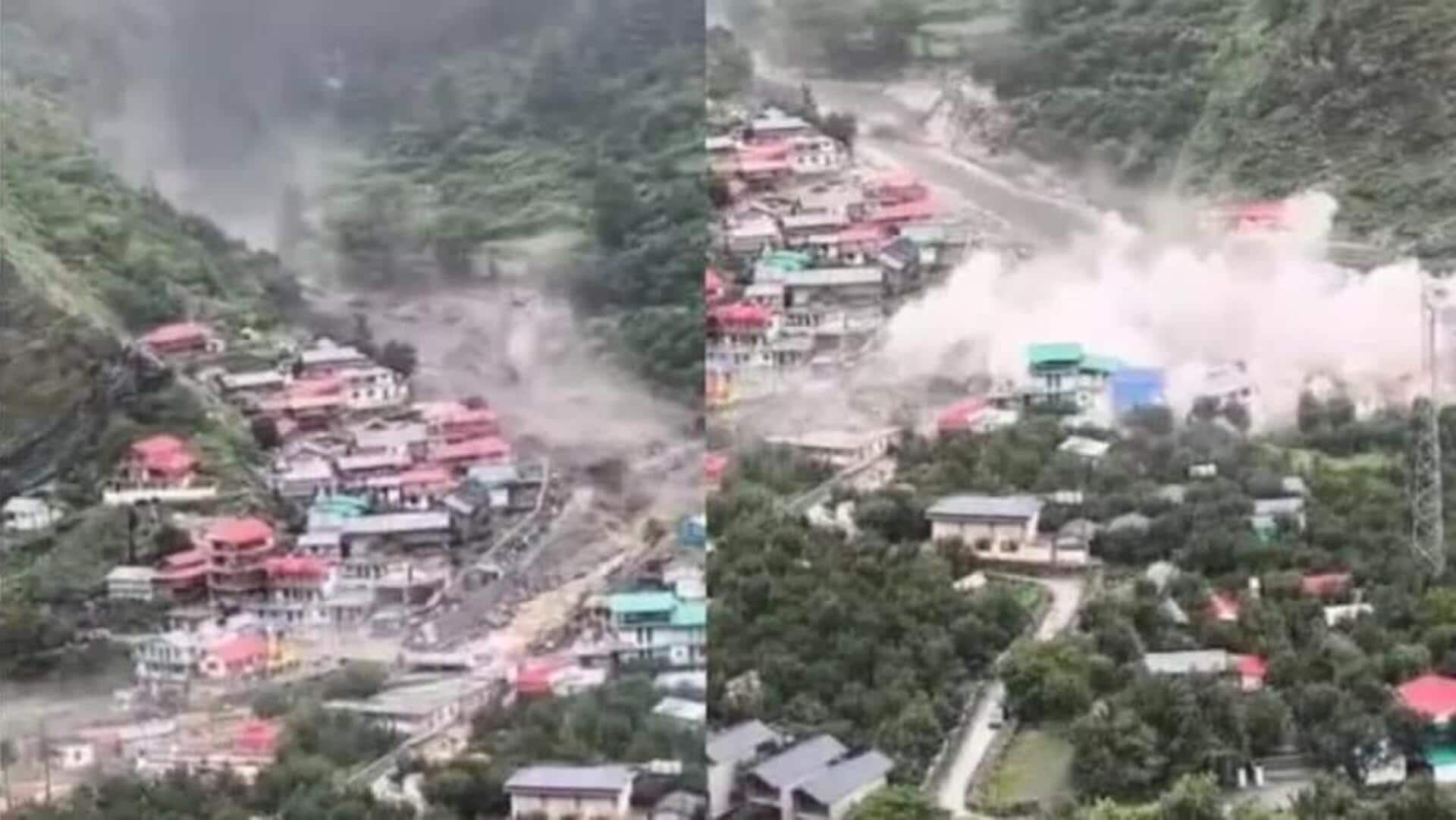
How cloudbursts drop over billion liters rain in single minute
What's the story
A cloudburst in Uttarkashi district's villages of Dharali, Uttarakhand, has caused severe flash floods. The incident has resulted in at least four deaths and left over 50 missing. The cloudburst occurred in the catchment area of the Kheer Ganga river. Videos showed water gushing down the hillside with great force, sweeping away houses, and taking debris and vegetation along with it. To understand how a cloudburst can cause such massive destruction in minutes, let us first understand what it is.
Weather phenomenon
Understanding cloudbursts
A cloudburst is an extreme weather event characterized by intense and sudden rainfall of 100mm or more in less than an hour over a small area. This can lead to devastating consequences such as flash floods and landslides. Cloudbursts are most common in hilly or mountainous terrains like the Himalayas, where warm, moist air is forced to ascend steep slopes through a process called orographic lifting.
Rainfall process
How do they occur?
The air cools and condenses to form clouds, leading to heavy rainfall. Also, strong upward air currents within thunderclouds keep raindrops suspended longer, allowing them to combine and grow larger. This process is known as the Langmuir precipitation mechanism. When these upward currents weaken suddenly, all the accumulated water falls rapidly, causing the intense rainfall characteristic of cloudbursts.
Weather conditions
What causes them
Cloudbursts can also be triggered by warm air masses mixing with cooler air, leading to sudden condensation. In monsoon-affected regions like the Indian subcontinent, moist winds from the Bay of Bengal or Arabian Sea travel across plains and accumulate moisture. When these winds hit the Himalayan foothills, they are forced upward, increasing the likelihood of cloudbursts.
Twitter Post
The cloudburst caused massive landslide
INDIAN ARMY CONDUCTS SWIFT RESCUE OPERATIONS AFTER LANDSLIDE NEAR DHARALI, UTTARAKHAND
— Aditya Raj Kaul (@AdityaRajKaul) August 5, 2025
A landslide occurred near Dharali village, approximately 4 km from the Indian Army Camp at Harshil, at around 1:45 PM today.
Responding with urgency, the Indian Army mobilised *150 personnel… pic.twitter.com/BUn5LPA7RQ
Natural disasters
Key differences between cloudburst and rainfall
The sheer volume of water in a cloudburst can be staggering. For instance, 100mm of rain over one square meter equals 100-liter of water. Multiplied over a small hilly area, this can result in billions of liters of water unleashed in minutes. Cloudbursts are notoriously difficult to predict due to their localized and sudden nature, posing a significant challenge for early warning systems.